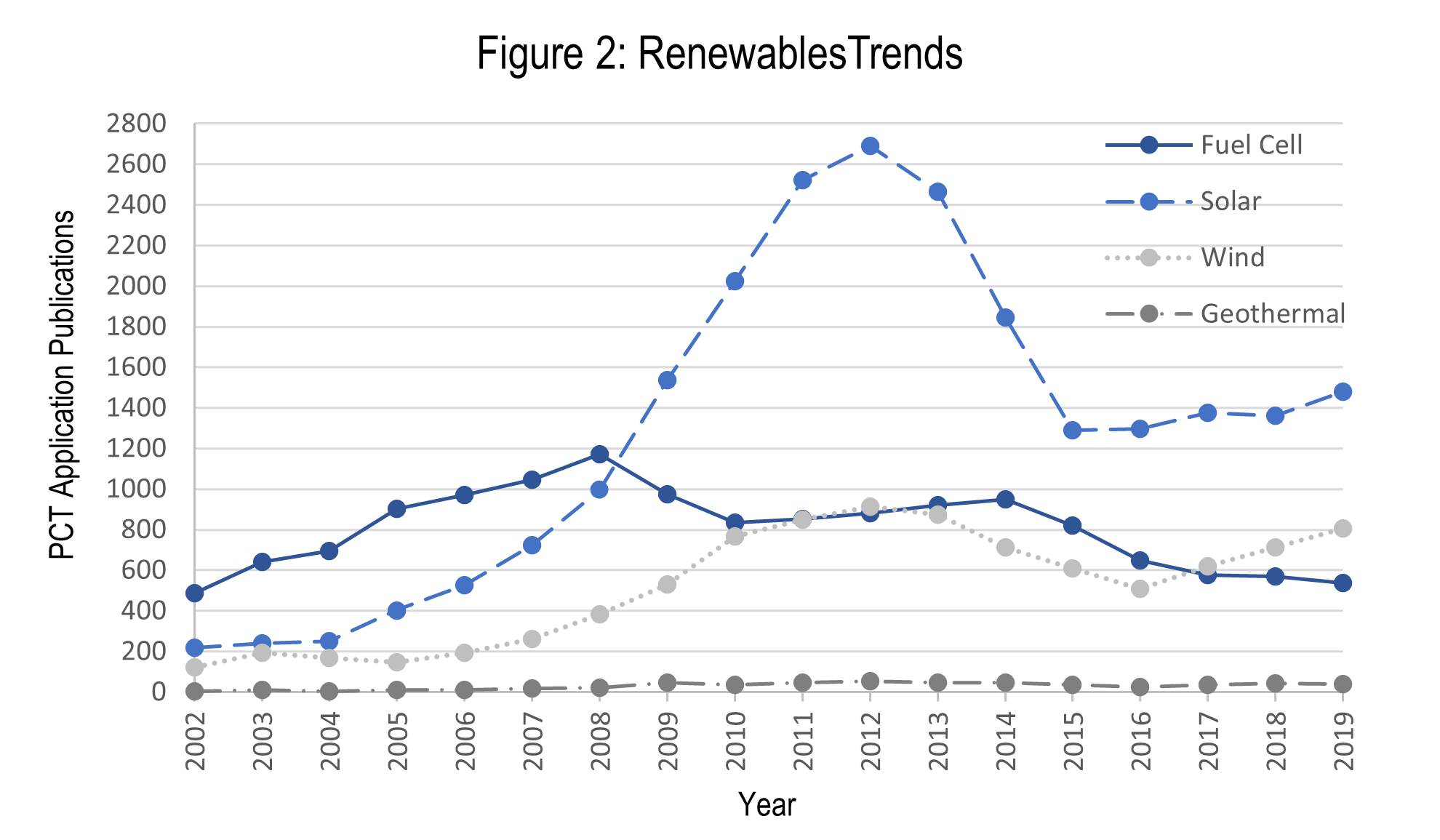
Cleantech in Focus: Fuel Cells

Growing evermore pressing is the need for clean and sustainable power sources. The Intergovernmental Panel on Climate Change Working Group I report, Climate Change 2021: the Physical Science Basis, recently brought the devastating impacts of unsustainable human activity, and the need for change, into sobering focus.[i] Technological solutions are required to transition away from traditional power sources, such as oil and gas, due to the finite supply and harmful byproducts that result from their production and combustion.
The rise of Tesla, Inc., a company whose name has become synonymous with battery-powered Electric Vehicles (EV), corresponds with the increasing global recognition of this need for change. With the spotlight on Tesla and battery power, many have overlooked another promising clean alternative to the internal combustion engine: fuel cells. Although first conceived of nearly two centuries ago, fuel cell technology is a modern contender to provide a source of clean energy, the applications of which are far reaching. Fuel Cell Electric Vehicles (FCEV) are just one of the many current and prospective applications. Further potential uses of fuel cell technology range from large-scale clean power generation to smaller scale applications, such as powering a personal electronic device.[ii]
Fuel cells produce clean energy by harnessing the chemical potential of fuels such as hydrogen. In simple terms, a fuel cell consists of an anode and a cathode, which are coupled together in an electrolyte and connected electrically. Fuel is supplied to the anode and reacts with a catalyst, separating into protons and electrons. The electrons go through an external circuit, generating a flow of electricity on route to the cathode, while the protons pass through the electrolyte and reunite with the electrons and oxygen at the cathode, generating water and heat. As long as fuel is supplied, fuel cells can continue to produce electricity, and where hydrogen is used, the only byproducts are heat, electricity, and water.
Although the basic technology of fuel cells has been long-established, there remains significant room for innovation and optimization of fuel cells and the chemical processes that take place within.
Patent filings and academic publications can provide insight into the research efforts and commercial interest in fuel cells. Figure 1 below shows the filing trend of international patent applications[iii] and global academic publications[iv] relating to fuel cells between 2002 and 2019. Fuel cell-related international applications rose to 1,173 in 2008. Despite a slight resurgence between 2010 and 2014, the number of fuel cell PCT applications has trended downwardly since the 2008 peak. Global publications of academic research relating to fuel cells show a similar trend but have remained relatively consistent. These data suggest that while interest in fuel cells peaked around 2008 or 2009, strong interest in fuel cells remains.

Figure 2 below shows the filing trends for international patent applications related to fuel cells compared with three other renewable energy technologies: solar, wind, and geothermal.[v] Between 2002 and its peak in 2008, fuel cells were the dominant focus of international applications for renewable energy. Since 2008, solar has been the dominant renewable technology, while fuel cells and wind have jockeyed for a distant second.

An analysis of patent application filings by patent office[vi] revealed that Japan saw the most fuel cell-related applications in the 20-year period between 2000 and 2019 by a substantial margin. Following Japan were the United States, WIPO, China, the European Patent Office, and Korea, respectively. China has seen a resurgence in fuel cell-related filings beginning in 2010 and has generally since trended upward to its high in 2019, overtaking Japan for the first time in the timeframe.
Recent innovations indicate an exciting future for fuel cell technology.
Notably, Toyota has introduced the Mirai, the first mass-produced FCEV. The most recent iteration of the Mirai has a 182 horsepower fuel-cell electric powertrain, is capable of driving up to 402 miles (about 650 km), can accelerate from 0 to 60 mph within 9.2 seconds, and has a hydrogen fueling time only slightly exceeding that of a traditional gas station.[vii] While hydrogen storage has long been a key problem in the development of fuel cell vehicles, the new generation Mirai saw a 30% increase in fuel range over its predecessor, 20% of which has been attributed to Toyota’s improvements to hydrogen storage capacity.[viii]
A review of Toyota’s patent portfolio revealed some of their most recent innovations in high-pressure, multi-layer, carbon fibre reinforced hydrogen storage tanks. U.S. Patent Application No. 2020/0247070 shows one such multi-layer high-pressure tank for use with a FCEV.[ix] Similarly, U.S. Patent No. 10,995,909 describes the manufacture of another of Toyota’s multi-layer hydrogen tanks.[x] U.S. Patent Nos. 10,612,725 and 10,704,738 are directed toward improving the pressure resistance of Toyota’s high-pressure tanks while efficiently utilizing the vehicle space.[xi]
Toyota has also demonstrated the power capacity of FCEVs in a collaboration with Kenworth Truck Company. The collaboration produced a fleet of Kenworth Class 8 semi-trucks powered by Toyota fuel cell powertrains that are capable of pulling up to 80,000 lbs and were used to haul freight along the California coast.[xii]
Fuel cell technology has also been applied to small aircraft. For example, Cummins has produced the world’s first hydrogen-powered aircraft – a four-seat airplane – which has successfully completed 30 test flights at 2-hours each.[xiii]
Alakai Technologies Corporation has recently introduced the Skai hydrogen-powered multirotor aircraft that has a 1,000 lbs carrying capacity, is capable of travelling up to 185 km/h, can perform a 4-hour flight at an average travel speed of about 135 km/h, and can refuel in less than 10-minutes.[xiv] U.S. Patent No. 9,764,822 describes a clean fuel electric multirotor aircraft[xv], and U.S. Patent Application No. 2021/0229822 describes a lightweight high power density fault-tolerant fuel cell system[xvi].
The U.S. Department of the Navy has been actively developing fuel cell technology for use at sea. For example, U.S. Patent No. 10,731,549 describes an in-water refuelling system for unmanned undersea vehicles with fuel cell propulsion.[xvii] U.S. Patent No. 9,276,283 describes a self-propelled under-water vehicle that uses a microbial fuel cell to generate energy from a marine sediment environment such as the seafloor, which enables the vehicle to operate indefinitely for prolonged expeditions by recharging off microbial activity.[xviii] A microbial fuel cell captures the energy created by cellular respiration of bacteria as the bacteria digest food. The food can be almost anything including human waste.[xix] While the Navy patent considers aquatic vehicle applications, there is potential for large-scale power generation while simultaneously breaking down human waste.
Innovations in fuel cell technology need not be directed solely at a particular application, such as an FCEV, but rather can bring improvements to the technology itself. For example, fuel cell catalysis typically involves platinum, a costly precious metal. Ballard Power Systems Inc. has developed a non-precious metal catalyst that, in a PEM (proton-exchange membrane) fuel cell design, uses 80% less platinum.[xx] U.S. Patent No. 9,385,377 describes a method of producing one such catalyst, which uses a palladium core with a platinum shell, and takes advantage of the fact that the catalytic reaction occurs on the surface of the particle only.[xxi] This patent was owned by Ballard but has been assigned to Audi AG.
As another example, the wide-scale adoption of fuel cell technology has been limited by the high cost of hydrogen production. In recognition of this, Bloom Energy and Heliogen Inc. have partnered to combine Bloom’s solid oxide, high temperature electrolyzer with Heliogen’s heat-generating AI-enabled solar energy system to produce hydrogen 45% more efficiently as compared to low-temperature PEM and alkaline electrolyzers.[xxii]
Referring again to microbial fuel cells, one barrier to large-scale power generation applications is the relatively low currents generated due to the poor transfer of electrons released by the bacteria to the anode of the fuel cell.[xxiii] Further innovation – perhaps involving genetic modification of the bacteria – is necessary to see this promising multi-purpose clean technology become a reality.
Recent advancements and new applications such as those mentioned above show the potential for fuel cells as we transition away from traditional power sources. Innovation will continue, and we are excited to see what the future holds for fuel cell technology. For more information, or if you have questions about protecting your intellectual property assets for fuel cell-related technology, please contact a member of our Cleantech practice group.



